Here is a special interview with Aco Sakamoto who was the runner-up in the Kokka Print Textile Competition “Inspiration” in 2015. Sakamoto launched her food-themed textile brand named GOCHISOU, upon finishing her master master’s course in textile design. Her latest collection with Kokka, OYATSU, has been available since January 2018. She always intends to create textiles that bring people joy, just like delicious foods make us happy.
I have liked drawing from my childhood; actually I was really good in elementary and junior high school art classes. My passion for art was enough to let myself participate in sketching competitions, including the one I received an award. In the first few years of elementary school, my dream for the future was becoming a painter. As I was getting older and studying harder, however, I came to think I would not pursue a creative career but just go to a regular college.
It happened when I was in high school and considered which colleges to attend. At that time, I was a student of a high-ranked school in Matsuyama City (Ehime Prefecture, Japan) of which most students headed for colleges. While aiming for a regular college, I could not give up pursing my dream to live with art. So, I asked for my older brother’s advice about it. He said, “With technological innovation, robots will take over human jobs. But design or creation is the one thing only humans can do. I believe it is worth pursuing a creative career, which a robot never can do.”
Encouraged by his advice, I took a step toward my dream. But I had to learn drawing techniques for the practical exam that is one of entrance exams conducted at most art colleges. Therefore, I studied at a prep school for two years while going to high school.
At first, I wondered which subject to major: product design or something fashion-related. I eventually chose to study textile design at Tokyo Zokei University that granted me admission to either product or textile major. I chose a textile major because its curriculum contents were more appealing to me.
The last two years at graduate school was way more fruitful. Following a hectic life with both individual and team projects, I was seriously committed to production works. I always asked myself: what to express with my textile; what about the importance of textile in our everyday lives; or how to contribute to people’s lives with my textile. I focused on my limited time on consideration, research, and presentation to move on to the next challenge. Thus, my school life went on with a repetitive cycle of trial and error.
I quite agree. There were two axes in textile design major: dyeing and weaving. I studied the former. Regarding dyeing or printing, colors and patterns are only things we can use to show off our artistic characters. While some do the design just for the intended use of product, others give more importance to the finished form. At school, however, the production process is more important than anything else including its perfection level. So, I worked on projects from dawn till dusk with careful attention to the process of production.
Yes. Anything about foods holds a special place in my whole life, thanks to my family, especially my mom. She makes all meals by herself, even snacks and sweets. I enjoyed her homemade meals from my childhood. I learned a lot from my mom: flavor of each ingredient, recipes, as well as the significance of local meals and seasonal foodstuffs. Besides textiles, it was food-related things that I could be dedicated to my passion in. That’s why I decided to incorporate my knowledge, favorite items, and passion for foods in my textiles.
Then, I went to a variety of bakeries, cafés, and restaurants. Observing those eateries with a textile designer’s eyes, I got some ideas how to make them more attractive by using textile effectively. Interior décor and table coordination can be more tasteful with textile. Textile may open up the possibility of spatial presentation. For example, how about tablecloth of which shop’s original logo or pattern is printed? Such a project is what I have wanted to do since I started to feature foods as motifs for my textile.
I have featured only bread as motif so far. But I plan to change motifs on a two-year cycle.
I am flattered to hear that! That was one of goals to be achieved when I started my brand. Why bread motif? Because bread is familiar to everyone as well as bakeries always make people happy. Any kind of bread is yummy. Nobody dislikes bread.
Nevertheless, no textile designer adopted such a popular food as motif that had a potential to be preferred. I dreamed of someone feeling like going to a bakery with a bag or in dress made with bread-printed fabric. That’s why I started designing textiles with bread motifs.
Surprisingly I have received good feedback more than I expected. They compliment my textile brand on its unpredictable designs or colors. I am so glad that the bread-designed fabric is accepted.
My top priority was to get the GOCHISOU brand known to more people. I therefore participated in various events to present my textiles. I willingly accepted invitations to store events as well as I aggressively approached organizers at events.
The spring of 2017 was hectic! I was involved in a few events every month. Each event was not so big, though. The fact is, those events were where most people encountered the GOCHISOU textiles for the first time. My brand is known more than before, but I have not felt accomplished yet.
Indeed. I have to do everything by myself since my business is still too small to hire employees. But that may not be all bad. The face-to-face communication with visitors to events is important for me. Listening to their favorites or demands eventually bring about positive impact on my production work.
Yes, I did. It was held for a whole month. I attended it in the first three days including setting up the venue.
I unexpectedly received an email from the owner of an art gallery called Nikai Toshoshitsu. I am not exactly sure how she got to know me, but I guess some promotion pictures of my fabrics generated her interest in exhibiting my works there. Her gallery is located in one of hipster neighborhoods in Taichung City. A boom in renovation has taken place in Taiwan, and Taichung City is no exception. The old buildings such as shops, dormitories, or condominiums are renovated and converted into stylish cafés, restaurants or clothing stores.
The art gallery, where I held the exhibition, is one of the renovated buildings and very popular with both individuals and tour groups. Its owner, who is a Taiwanese, loves Japan and runs a business to deal with all sorts of Japanese knick-knacks from brooches to antique lids of milk bottles.
The gallery is also used for an antique market on weekends. At such a charming venue, I did a workshop to make garlands with remnants. The good news was my textiles sold well for the duration of the exhibition.
Apparently any product from Japan is regarded as a synonym for high quality and actually popular among the Taiwanese. During my visit to Taichung City, I noticed there are quite a few hip cafés and shops with nostalgic atmosphere like the ones we often see in Japan. I believe that many Taiwanese people have the similar artistic taste or sensibility as the Japanese.
Certainly. I actually got more customers and received more inquiries from Taiwan. They currently inquire about where OYATSU fabrics are available or when my next visit to Taiwan will be. There is also a quite a few request to ship textiles to Taiwan. I want to revisit Taiwan within this year. I wonder if people’s tastes vary regionally: in Taichung, Tainan, or Taipei where is thronged with tourists.
The offer by a designer of Kokka was the beginning of the textile series. She had been wanting to work with me since Kokka’s competition in 2015. When approached by her, I had already launched the bread-themed GOCHISOU brand. We therefore decided to choose different foodstuff as the theme, of which even children would enjoy, for our collaborative textile.
Yes, it is. The mass production by machine printing keeps the OYATSU collection prices low.
Absolutely yes! However, it was more important for me to raise the profile of my brand. It was my second year of running my own business, and I thought that there would be a huge difference between “via Kokka” and “myself” to raise product awareness. I really wanted more sewing lovers to know about my fabrics even though it was “via Kokka” products. I therefore opted for promotion of my brand over a profit.
I participated in a textile fair named Nuno-Haku, which was held in February 2018, with textiles of both my private GOCHISOU brand and the collaborative OYATSU collection with Kokka. Both sold well. To my great pleasure, the sales figures of GOCHISOU textiles went up.
It is. And, OYATSU textiles did well, too.
Yes. As for GOCHISOU brand, I adopt the material of linen as well as the traditional form of hand screen-printing.
It is a little-known technical matter. The fabrics in OYATSU collection are machine-printed which is called the automatic-screen printing. Hand and automatic are basically same technique. With the automatic-screen system, however, a subtle overlaid color effect cannot be created since a second color is put over a first color that is still wet. On the other hand, the hand-screen allows you to do that.
Let’s say, you can create the third color in greenish by layering blue over yellow. Printing one color on top of another color. It is called an overprint. Overprinting is possible with the hand-screen while impossible with automatic-screen.
By using overprinting technique, you can create cool print effects such as overlaid coloration, brightness, spatial effect, or illusion of depth. It is also unpredictable what kind of color or subtle blur is actually born, because it depends on fabric materials. It is thrilling.
Kokka mostly left it to me. I presented a few prepared ideas to get their approval or advice. While most of my design plans were accepted, I designed a fabric named “Muffin” to meet their request: polka-dot-like, anywhere-usable, and all-over print.
Yes. Any OYATSU fabric allows you to cut in small pieces or to use for kids’ items.
Yes. I wanted to make the collection for both adults and children.
I considered together with Kokka about their suggested materials as well as my preferred materials including unbleached cotton and cotton/linen.
It was quite difficult for me to think about color scheme. Food has its own color as we see in everyday life. Bread painted in blue color cannot be seen as bread. Such a fabric with strange-looking food motif cannot attract people. I wondered what combination of three colors would be appropriate or meet customer’s preference.
While there is a color limit for GOCHISOU brand, I used many colors for OYATSU to make it more expressive.
I will have a solo exhibition at the gallery/café MUSTAKIVI in Matsuyama City in this August. This gallery, which is produced by a Marimekko designer Mr. Fujio Ishimoto, was opened last year in the neighborhood of the Matsuyama Castle. When I returned home in Matsuyama last year, I could luckily meet the gallery’s manager who became interested in exhibiting my works then. I am planning to introduce my new collection in this exhibition. After then, I will hold another solo exhibition at Hikarie retail complex in Shibuya district, Tokyo.
I plan to keep the bread-themed textiles separately while collaborating with local bakeries. Last March, I held an event called “GOCHISOU TEXTILE EXHIBITION” at Isetan Department Store. Just for the event, I made a collaborative textile with seven bakeries that were the department store’s tenants. In the event, we sold the bags made with the collaborative textile. That was my idea. I wanted to do something new by teaming up with them, besides promoting my private brand fabrics.
It is Japanese meal! Among quite a few items related to Japanese-style meal, I have chosen dinnerware for Japanese cuisine as the first series of the new collection.
That’s true. There are various kinds of dinnerware. Dinnerware is a part of Japanese cuisine culture. It is not too much to say that Japanese meal is incomplete without dinnerware. Unlike other cuisines, there is a variety of Japanese dinnerware to host for each guest or to meet each occasion. It is the spirit of Japanese styled hospitality and respect. Different type of dinnerware for different purposes represents the aesthetic feeling that has existed from old times in Japan. I want to incorporate the charm of Japanese dinnerware in the textile. As you see Shussai Ware or Onta Ware, for example, the feature of dinnerware varies according to regions. I will select a few from a number of wares to use as design for textile.
I will gather more information through traveling to see potteries here and there. I believe that my new dinnerware-themed textiles will open up a whole range of possibilities, such as an event to boost development in a local area. I wish I could create textiles of various potteries.
While working for new collection, I want to keep contributing to revitalize local communities with my bread-themed textiles. There are countless bakeries throughout Japan. It is my dream to uplift local communities with my textiles inspired from meal and food culture.

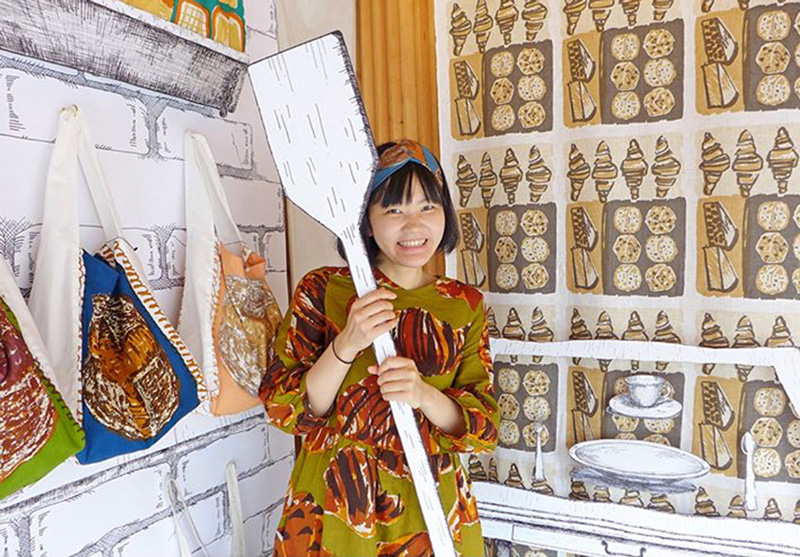
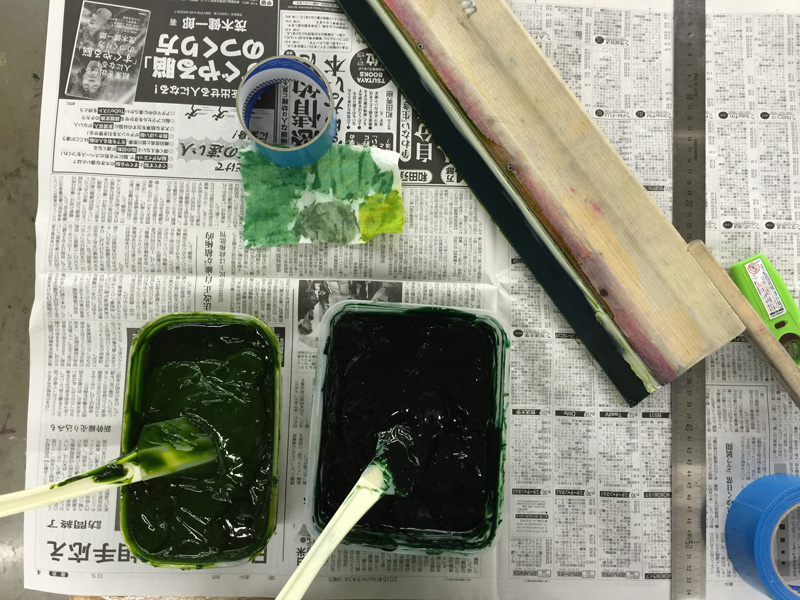
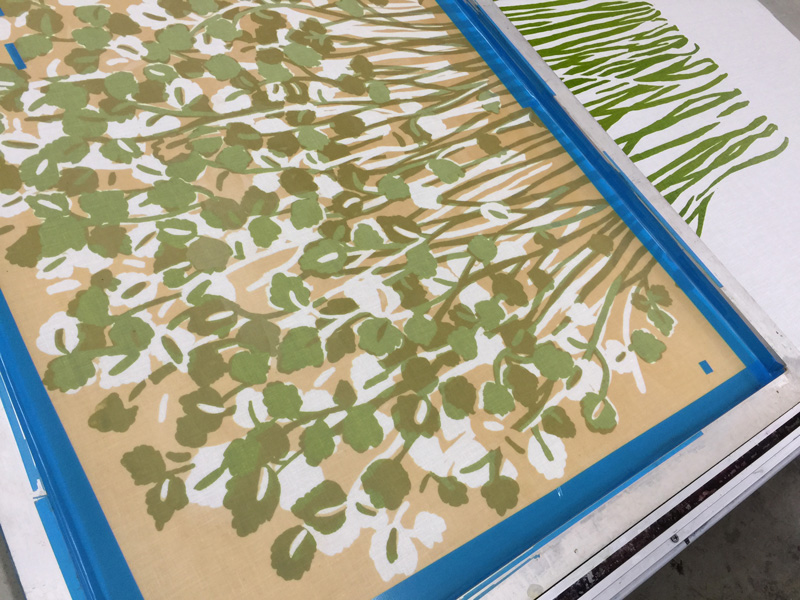
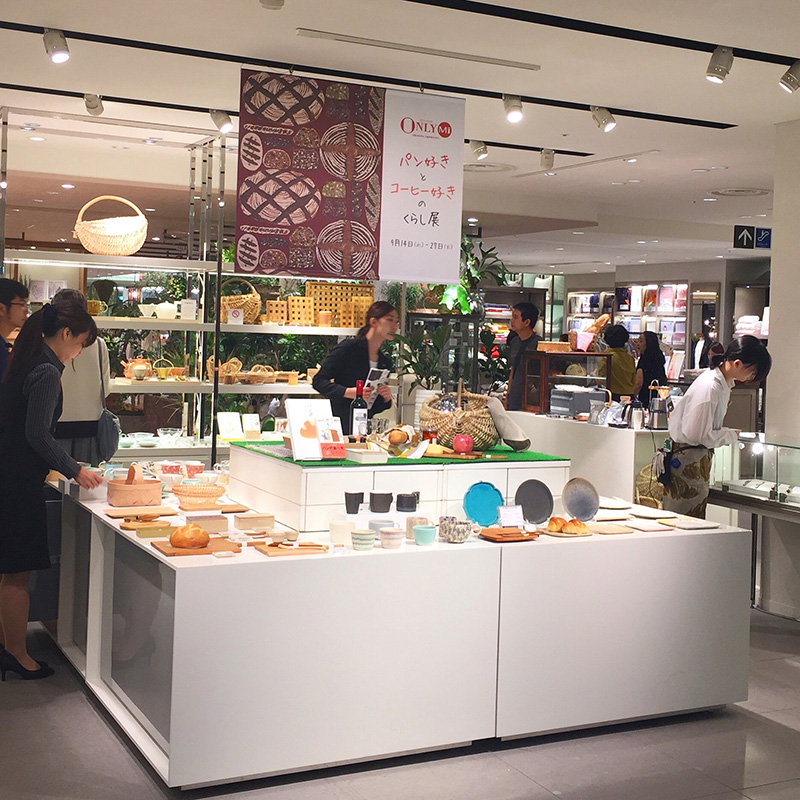
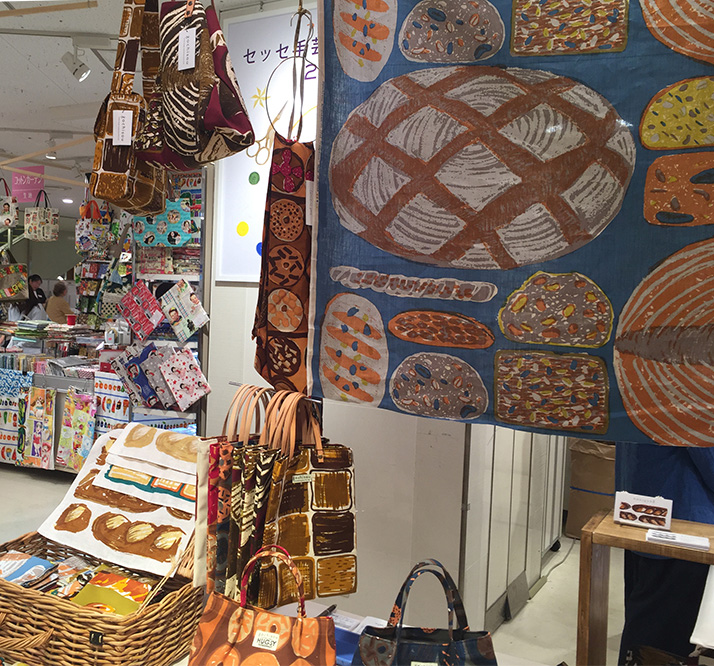
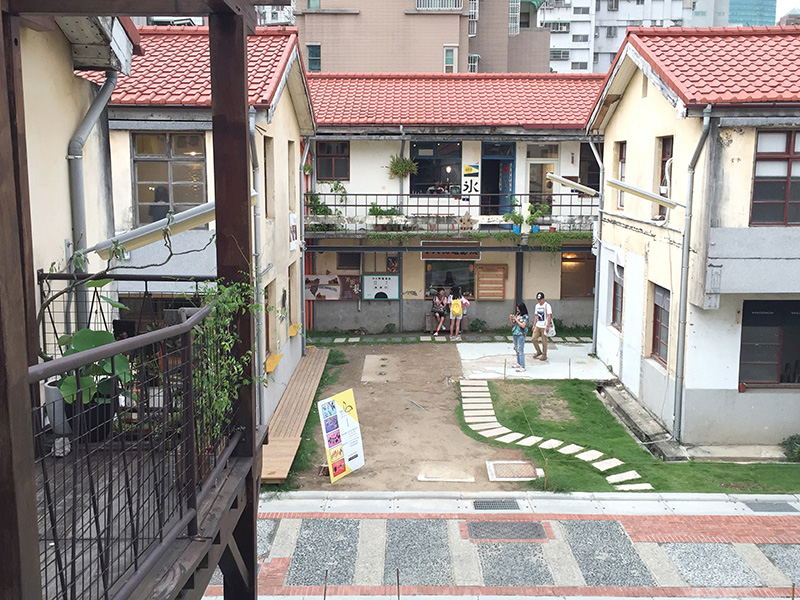
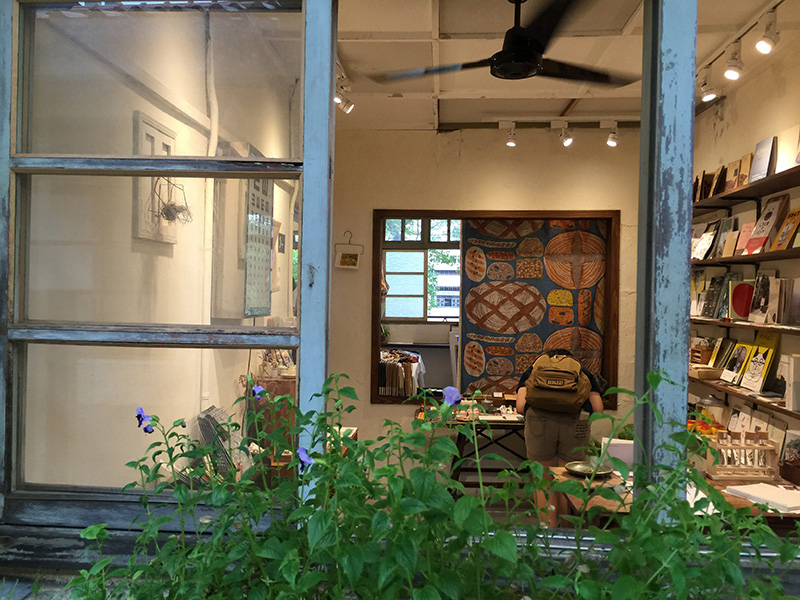
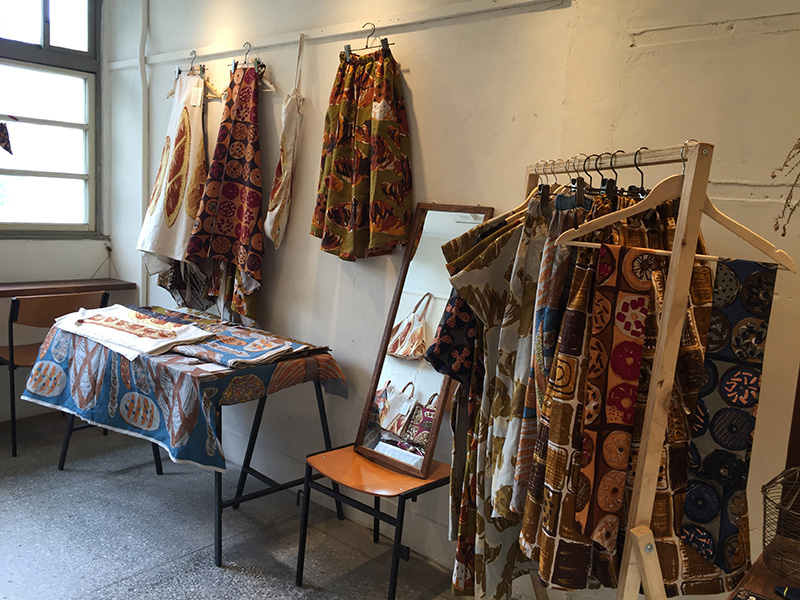
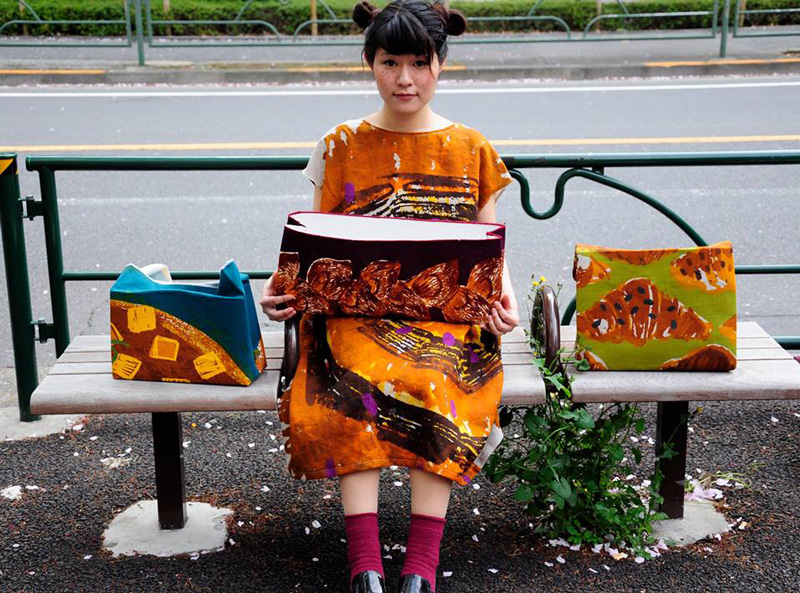
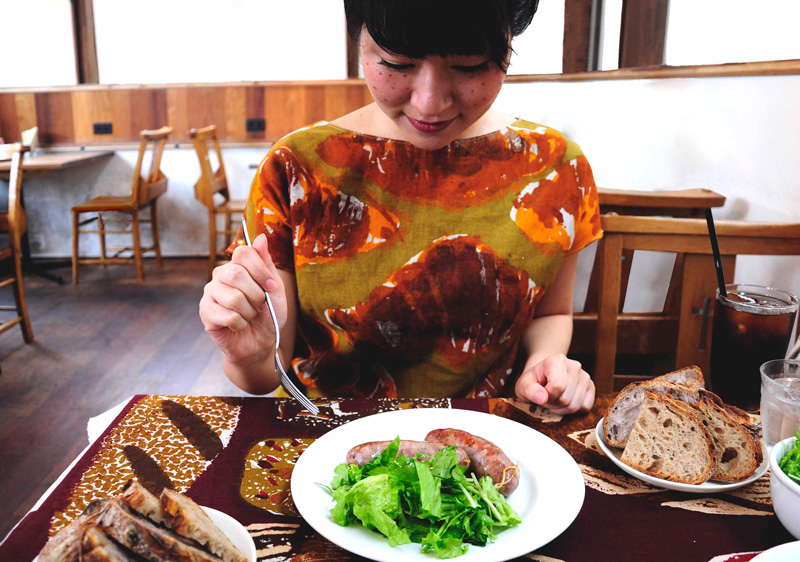

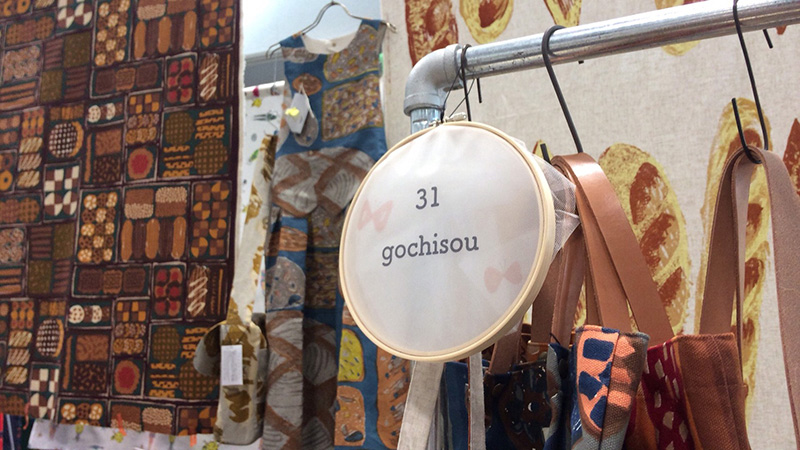
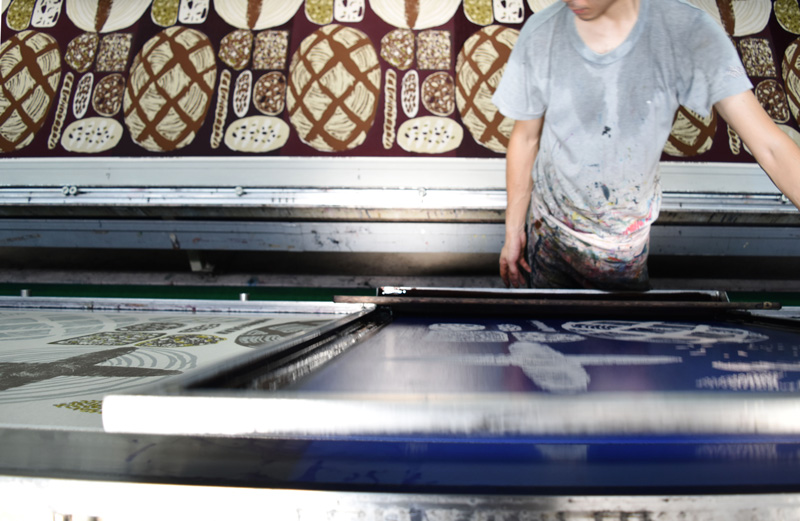
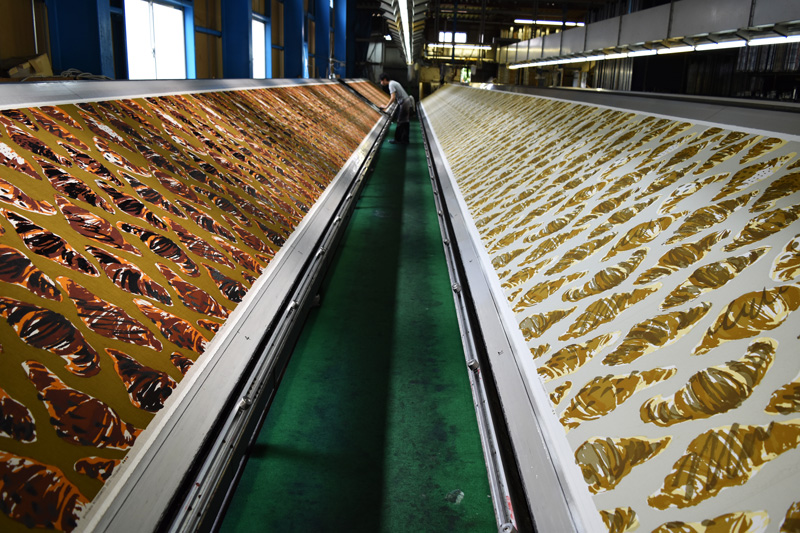

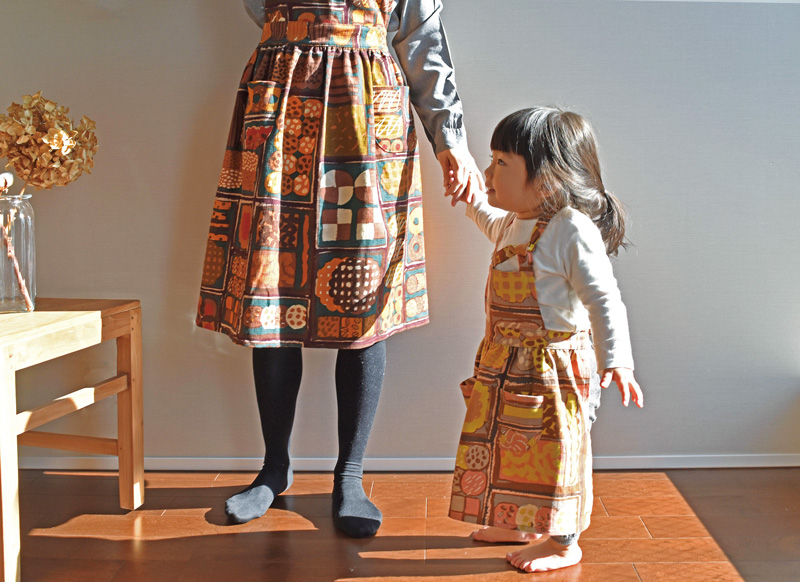
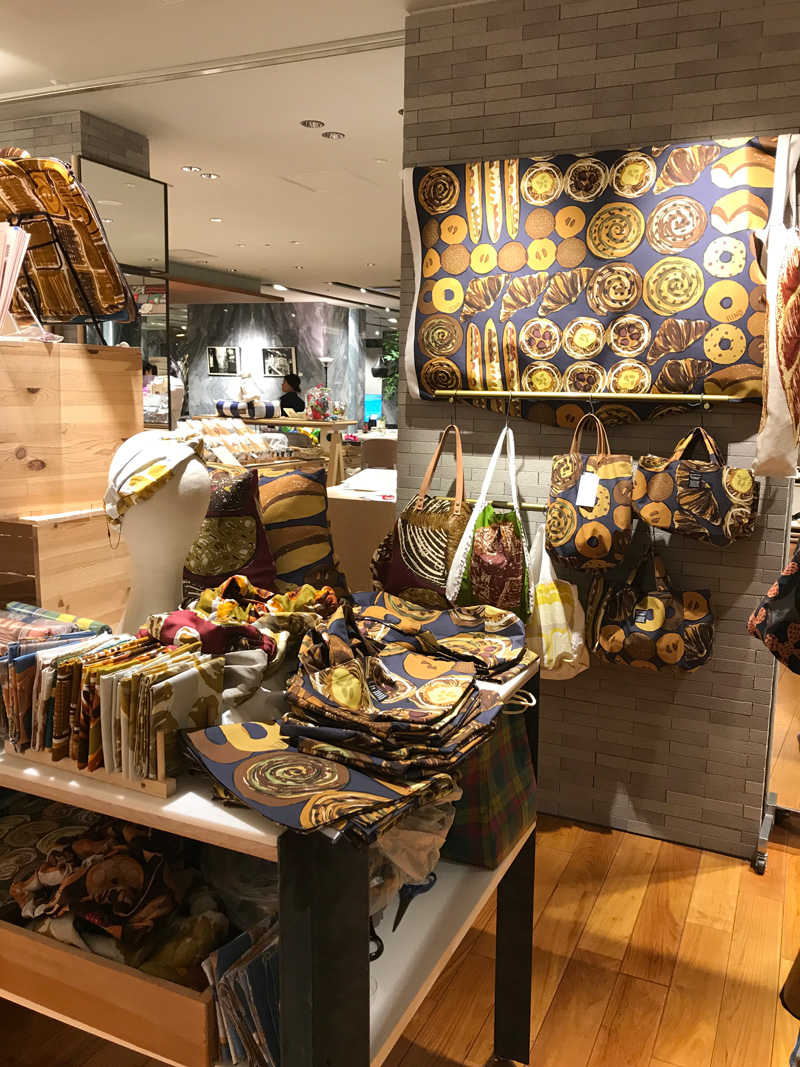
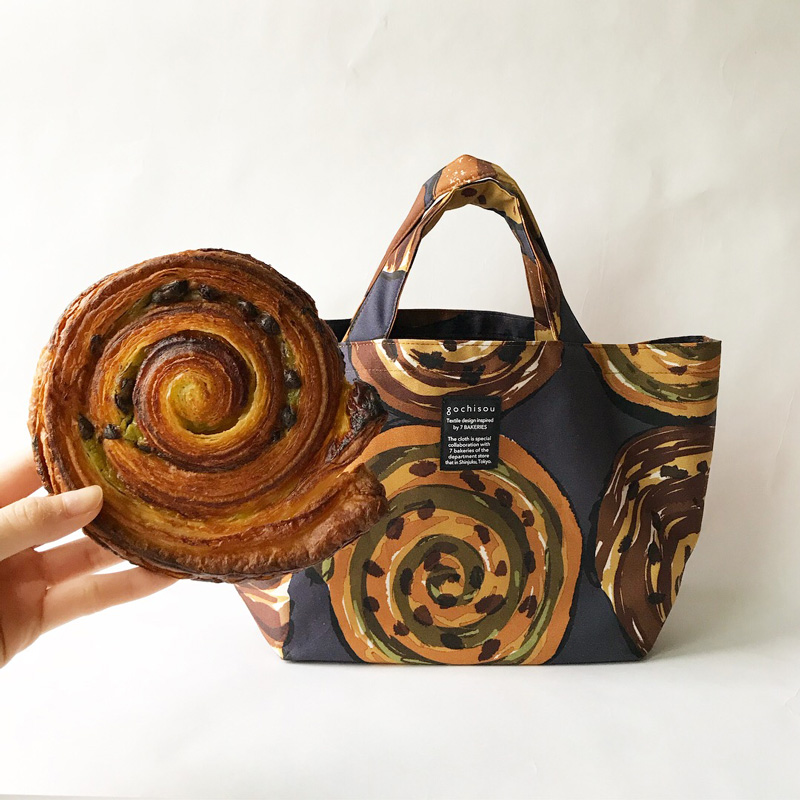
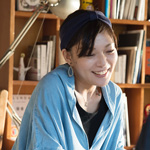 Visit artist 017: Ayano Ichiyanagi (Painter / Designer)
Visit artist 017: Ayano Ichiyanagi (Painter / Designer)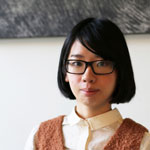 visit artist file 014Sawako Ura (Designer)
visit artist file 014Sawako Ura (Designer)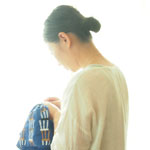 visit artist file012 Ayumi Toda(fabrica uka designer)
visit artist file012 Ayumi Toda(fabrica uka designer)